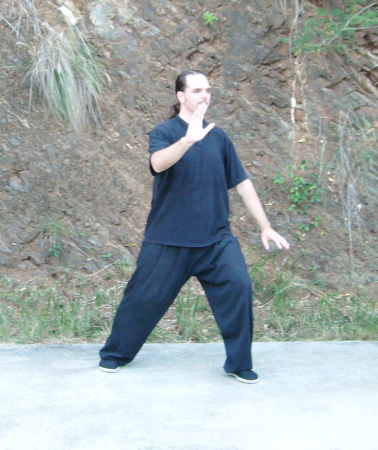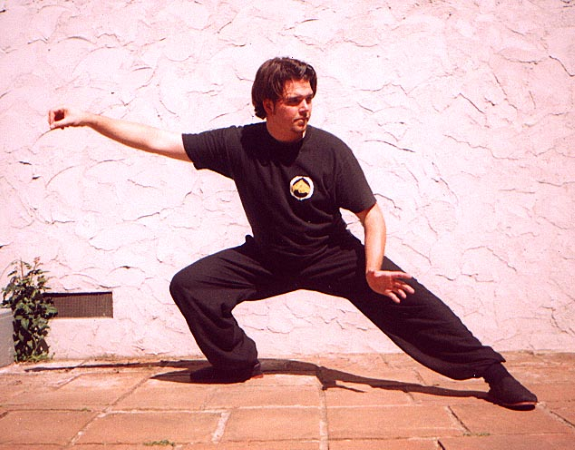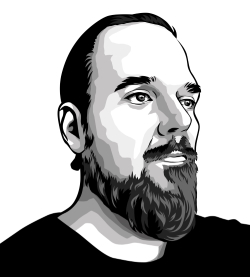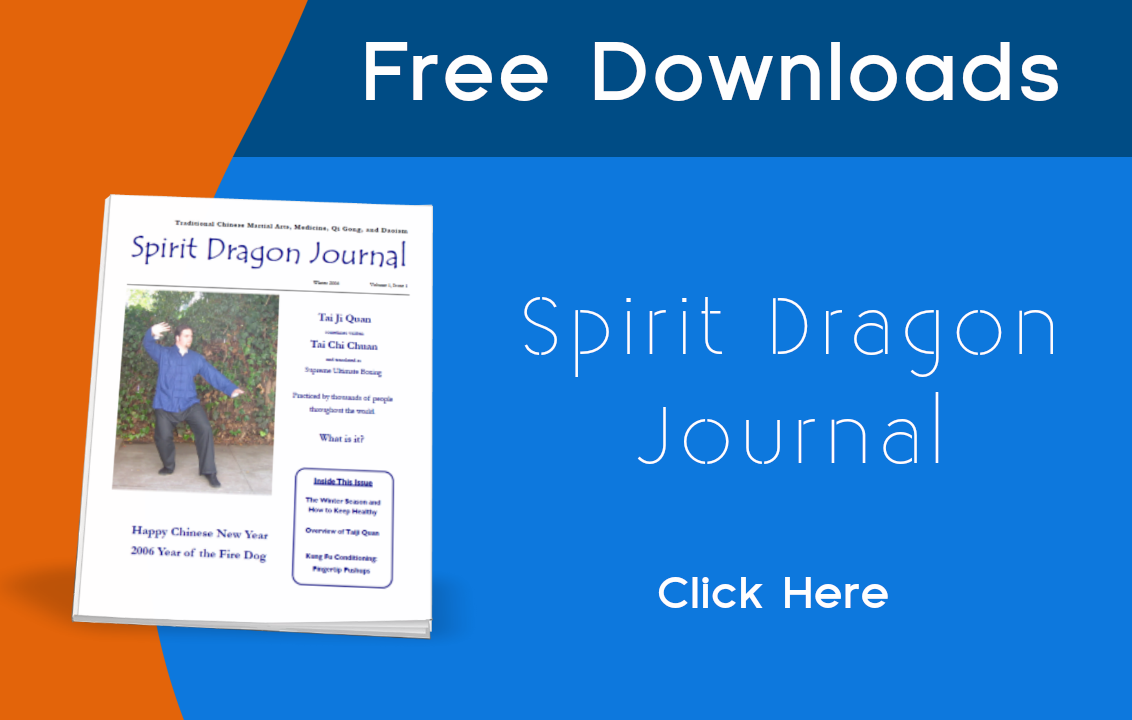Taiji Quan (Tai Chi) is an art with Taoist origins. Like the Tao, Taiji Quan is hard to talk about because it encompasses so many different aspects. Taiji Quan can be described as a physical exercise, qi gong, a martial art, and a spiritual practice. The origin of Taiji Quan is very obscure but the benefits gained from practice are not. Taji Quan is just one of many ways to experience Taoism.

Franklin Fick - Tai Chi Brush Knee
Like most Taoist exercises Taiji Quan works with energy or Qi. The form and the principles of Taiji Quan are in accord with Taoist philosophy. The beginning posture of the form is called the Wuji posture. Wuji is the state of nothingness before Taiji (the two energies of yin and yang). While in the beginning posture (Wuji) the practitioner calms his mind and a state of tranquility is achieved throughout the body. From this posture the practitioner then moves into the form. When movement starts the body as entered into the state of Taiji (yin and yang are differentiated). This appears in the body as insubstantial or empty and substantial or full. At the end of the form the practitioner once again returns to the Wuji posture and the state of nothingness. This process of beginning in nothing and returning to nothing mimics all creation in the universe. Everything begins from nothing and returns to nothing. This in direct correlation to the Tao Te Ching when it states in chapter forty two “the Tao begot one / One begot two.” The Tao begot nothingness or Wuji and the nothingness (Wuji) begot the two (Yin and Yang). This differentiation of Yin and Yang is Taiji Quan.
When practicing the form the whole body must be relaxed and the tongue must touch the roof of the mouth. This will connect the Du and the Ren meridians. If the body is tense the Qi will not be able to flow and the mind will not be able to direct the movements. The form is practiced in a relaxed manner very slowly and it should appear rounded and have no breaks. The Taiji classics state: be still as a mountain, move like a great river. This means that when standing still you should have the same intention as a mountain, unmovable, and when moving you should look like a great river, ever flowing. By practicing in this way, relaxed and slow, the Qi will naturally start to flow.
The differentiation of yin and yang on a basic level means that the weight is always being shifted from one leg to the other. The leg with the weight on it is considered yang or full and the leg without the weight on it is considered yin or empty. The form is just like the Taiji diagram. The extreme yang changes into yin and vise versa. In the form this is shown when the weight is fully shifted on to one leg it is then shifted to the opposite leg.

Franklin Fick - Tai Chi Snake Creeps Down
The slow movements of the form and the constant weight shifting give Taiji Quan many of its health benefits. The muscles of the legs get an aerobic workout from practicing the form. This is important because the legs contain the largest muscles in the body. Because of the slowness of the movements the practitioner should never get out of breath. This makes the practice of Taiji Quan adequate fro the weak or old as well as the young and healthy.
On the physical level the movements of the form help to loosen and joints and strengthen the body. This is done through what is traditionally called silk reeling. What this means is that the movements of the form twist the joint in one direction, then the other. Moving the body in this way strengthens the tendons and ligaments of the body. This twisting motion also works to generate and store internal energy. The form done slowly with this silk reeling energy helps to realign the body so that it can move as a whole unit. This is what gives Taiji Quan its effectiveness as a martial art.
The other thing that gives Taiji Quan its effectiveness as a martial art and as a health exercise is its use of the mind and the cultivation of the spirit. First the mind must sink the Qi to the lower Tan Tien, which is located about 3 inches below the navel. Once this is achieved the mind can direct the qi to move the body. The principle is that the mind leads the Qi and the Qi moves the body. The classics said, ‘first in the mind, then in the body’. This means that before the body can move, the mind or the spirit must direct it. The movements are practiced slowly so that the spirit and the mind can harmonize with the body. The practitioner should seek stillness in motion. At the basic level the mind is not concentrated on anything but the form. This means that when you finish the form you should not remember doing the form because the mind is completely in the present. At the higher level of practice the form becomes a meditation.
Along with being a movement meditation, Taiji Quan is also a method of Taoist alchemy. By keeping the Qi in the lower Tan Tien the form works as a Qi Gong exercise to store and generate Qi. One of the main things to observe and practice is that the spine has to be straight. The straightness is ensured by relaxing the hip joints and sacrum downward. This will tip the pelvis slightly forward, which straightens the lower part of the spine. To straighten the upper part of the spine you should have the sensation that the crown of the head is suspended from above. Practicing this way strengthens the spine and also allows the spirit to travel up to the brain.
When practicing keep the mind and the breath concentrated into the lower abdomen (Tan Tien). This means the inhalation causes expansion of abdomen and the expiration causes the contraction of the abdomen. This stimulates the internal organs and gives them what can be considered a massage.
In Taoist internal alchemy, putting the mind in to the lower Tan Tien is called putting the fire underneath the water. Once enough Qi is in the lower Tan Tien the small heavenly circle will start to open. This happens naturally during the form. As you inhale the breath and the Qi collect in the lower Tan Tien, and as you exhale the pelvis tips slightly forward and the energy travels up the Du meridian to the brain. Further development opens the large heavenly cycle and condenses Qi into the bone marrow. This has health effects on all the body’s system and makes Taiji Quan a very powerful martial art. The final stages deal with training the spirit and returning to the void, Wuji.






